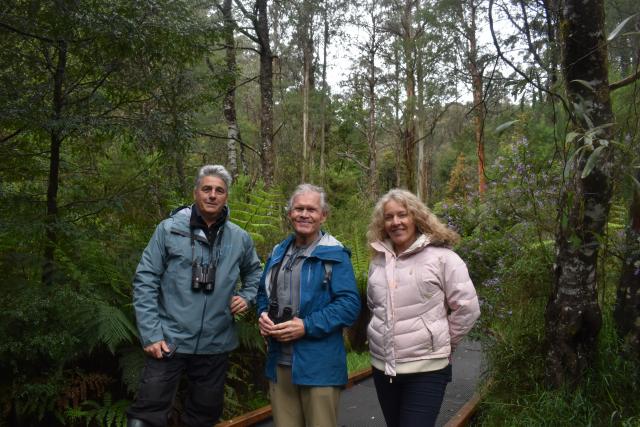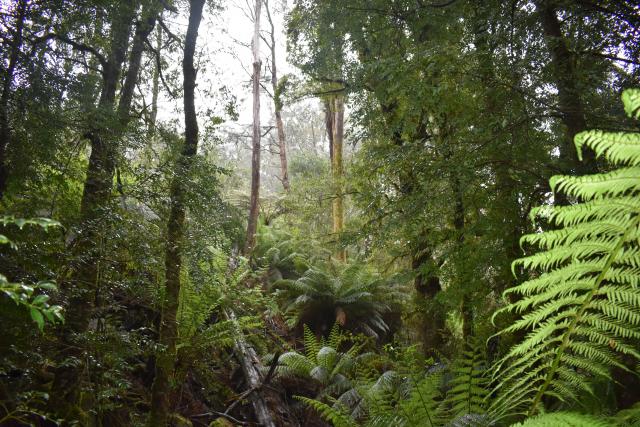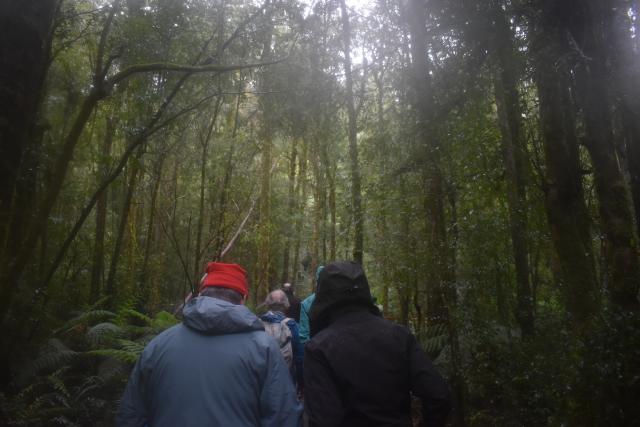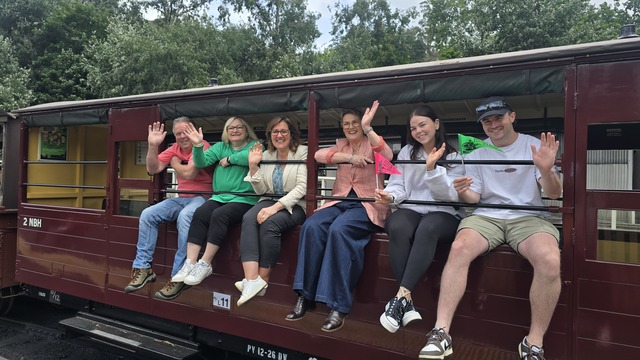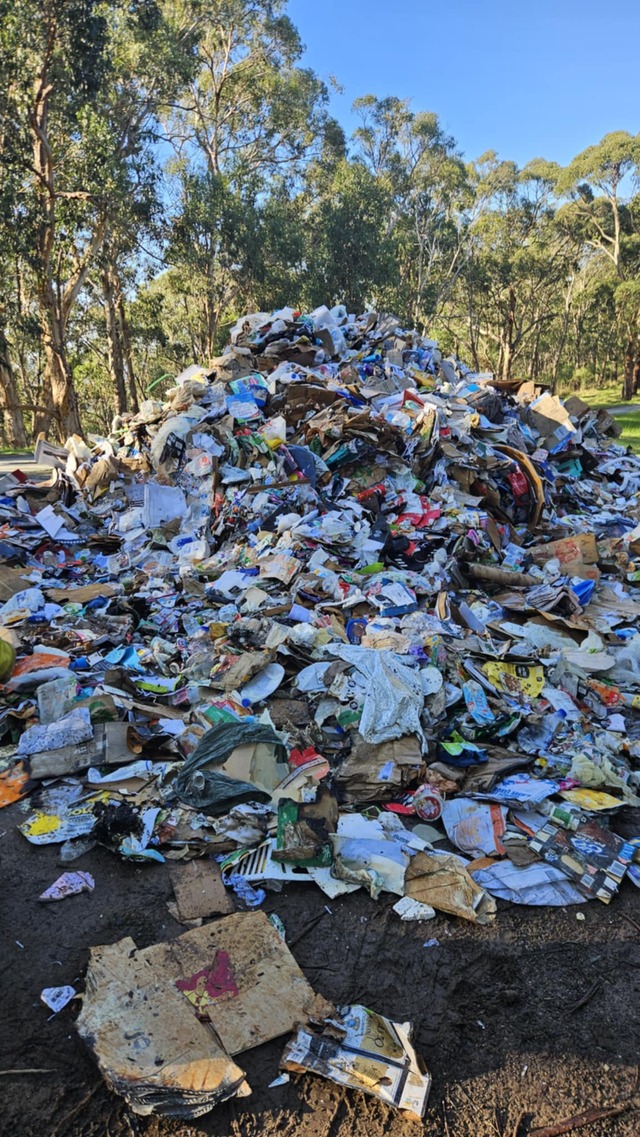A leading Australian forest ecologist and local environmentalists were joined by a world-renowned mountaineer and conservationist in the Yarra Ranges in support of the movement to end native forest logging and create the proposed Great Forest National Park (GFNP).
Rick Ridgeway joined the group on the Myrtle Gully Walk in Toolangi as part of his two-week stay in Australia.
Mr Ridgeway said we as human beings are facing two existential crises that are very interconnected and they’re both rooted in the fact that there are just too many people on the planet using too much of the planet’s limited resources.
“We’ve got climate change on one hand and species extinction on the other, but one of the key ways of solving them both at the same time is through the conservation of natural areas of forests, like the one that would be encompassed in that proposed Great Forest National Park,” he said.
“It creates an enormously important carbon sink for the partial solution of climate change and protects the biodiversity of our planet. For me, as an environmentalist who is privileged enough to travel around the world, when I come to places like this, I just feel their specialness and their magic, so it is a privilege to come here and meet everybody here who dedicates their lives to try and save and conserve a place like this.”
Recent court cases brought by the Warburton Environment and Kinglake Friends of the Forest groups have delivered landmark decisions that will further protect native endangered species like the Tree Geebung, Leadbeater’s Possum and Greater Glider.
Mr Ridgeway said losing an environment like this would mean future generations are going to see a devastated area and really not know what they’ve lost.
“It’s our responsibility to conserve this not just for ourselves, but all the human beings who are going to follow us as well as for the flora and fauna who live here,” he said.
“I just want to extend my hope to the Australian citizens who live around this proposed Great Forest National Park to really understand what a marvellous gemstone they have right in their own backyards. It’s the hope of us visitors who are so appreciative to come here and see things like the famous Tree Geebung, that you’ll all rally together to support the creation of this national park and save this wondrous place.”
The Great Forest National Park proposal was born in the local community following the Black Saturday fires in 2009, as a way to save what forest remained and protect the biodiversity, including critically endangered species such as Victorian emblems like the Leadbeater’s Possum and Greater Glider.
Founding member of the proposal and Toolangi resident Sarah Rees said after the Black Saturday bushfires, people were grieving.
“There was a real sense in the community of a mixture of feeling betrayed by the forest that they love, but also feeling incredibly passionate and committed to protecting it with a new vision,” she said.
“We looked at the work of Professor David Lindenmayer and his team and saw that this land is fractured. There was some really important reporting coming out from burned area emergency response team at the time saying to protect it because this is one of the last green areas, but that we can package this all up as a national park because people will want to come to see it and enjoy it.”
Members of the Friends of the Leadbeater’s Possum, Wildlife of the Central Highlands, Environmental Justice Victoria and Friends of the Earth Melbourne groups attended the forest walk, along with Wurundjeri Elder Perry Wandin and Prof. Lindenmayer from the Australian National University in Canberra.
Prof. Lindenmayer said he first started coming to work in the Central Highlands in 1983 and other than a short period though 1985 to 1986, he has worked here constantly ever since.
“I come down four or five times a year, and have someone who works in Healesville every single day so I am very connected to this place. When I first started coming here, Healesville, Marysville, Warburton and Alexandra were all timber towns but now most of those places have lost their mills, and the area is a tourist domain and we need the infrastructure to support that,” he said.
“There’s enormous potential, but not the investment to support the infrastructure and manage it well, Victorians and Australians are screaming out for places to go, and tourism and recreation, but you’ve got to provide the infrastructure for them to do it. The New Zealanders do it really well, they exited native logging 20 years ago and invested in their tourism, infrastructure and plantations and they’ve taken off.”
The current Victorian Government’s plan intends to end native logging by 2030.
“There is an enormous opportunity to come and see absolutely majestic forests and have an amazing experience in the Yarra Ranges. Some of the tallest flowering plants on the planet and almost all of Melbourne’s water supply is from here, yet it is largely unknown,” Prof. Lindenmayer said.
“We’ve seen in Western Australia and Tasmania that it can really revolutionise these regional economies, and people travel four or five hours from Hobart for it, while this is only an hour and a half from the MCG.”
The Central Highlands region is located around Healesville, Kinglake, Toolangi, Warburton, Marysville and Woods Point.
Recently 80 trail runners ran the inaugural Great Forest Trail Marathon, raising over $55,000 to fund the GFNP proposal and local environmental and First Nations groups’ efforts to protect the area.
The two trees that primarily make up the Myrtle Gully Walk are the Myrtle Beech and the Sassafrass, along with old-growth eucalyptus trees on the outer, which all are key fire breaks and prevent spread in the event of bushfire.

